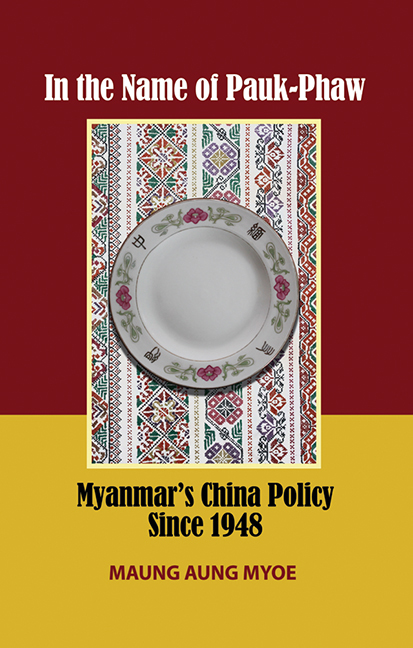
- Publisher:
- ISEAS–Yusof Ishak Institute
- Online publication date:
- October 2015
- Print publication year:
- 2011
- Online ISBN:
- 9789814345187
- Series:
- Indochina Unit

Since its independence in January 1948, Myanmar has tried to find a way to deal with (at one time) ideologically hostile and traditionally chauvinistic China which has pursued a foreign policy aimed at restoring its perceived influence in Myanmar. To counter China's attempts to influence Myanmar's foreign policy options has always been a challenge for the Myanmar government. Since the 1950s, successive Myanmar governments have realized that Myanmar's bilateral relations with the People's Republic of China should best be conducted in the context of promoting the Five Principles of Peaceful Coexistence, the Bandung spirit and the Pauk-Phaw (kinsfolk) friendship. The term Pauk-Phaw is exclusively devoted to denote the special nature of the Sino-Myanmar relationship. This work argues that Myanmar's relationship with China is asymmetric but Myanmar skilfully plays the "China Card" and it enjoys considerable space in its conduct of foreign relations. So long as both sides fulfill the obligations that come under "Pauk-Phaw" friendship, the relationship will remain smooth. Myanmar has constantly repositioned her relations with China to her best advantage. Myanmar's China policy has always been placed somewhere in between balancing and bandwagoning, and the juxtaposition of accommodating China's regional strategic interests and resisting Chinese influence and interference in Myanmar's internal affairs has been a hallmark of Myanmar's China policy. This is likely to remain unchanged.
 Loading metrics...
Loading metrics...
* Views captured on Cambridge Core between #date#. This data will be updated every 24 hours.
Usage data cannot currently be displayed.